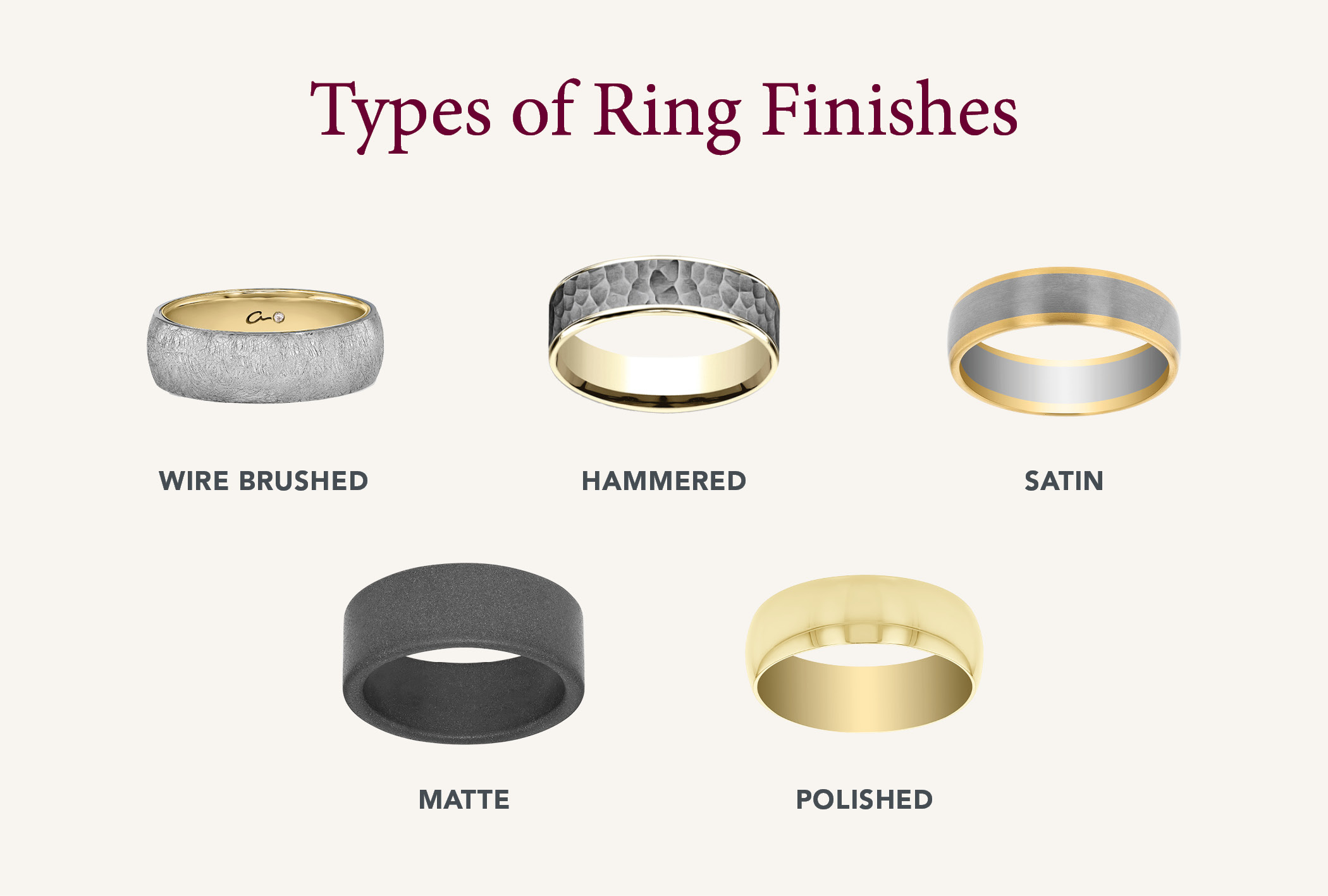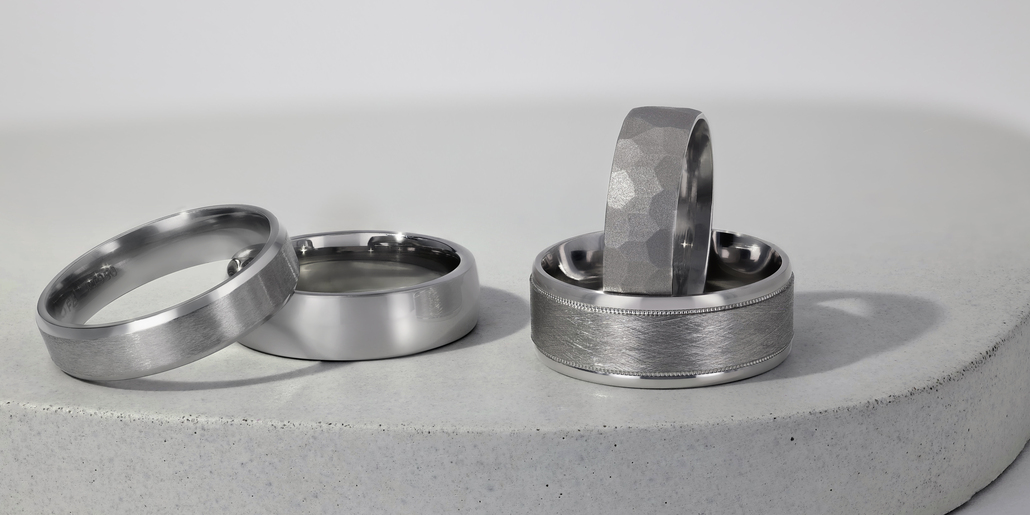Beyond mere aesthetics, a jewelry finish shapes how light interacts with metal, how a piece feels against the skin and how it reflects personal style. This guide explores the most popular jewelry finishes, explaining what they are, how they’re achieved and why they matter when choosing your next piece.
Polished
The polished finish is the most traditional and widely recognized jewelry finish. It features a mirror-like surface that reflects light brilliantly. It’s smooth to the touch and creates a classic, high-end look. This finish is the preferred choice for engagement rings, wedding bands and any piece meant to radiate pure, unfiltered sparkle.
Achieving this gleam involves a meticulous process of sanding, buffing and polishing. Jewelers gradually use finer abrasive materials to smooth out any imperfections, refining the metal until it becomes perfectly smooth and reflective. A final buff with a soft cloth and a specialized polishing compound delivers that signature dazzling shine.

Satin
A satin finish has a soft, velvety texture that gently diffuses light rather than reflecting it directly. Smooth to the touch with a very fine grain, it produces a luminous sheen that’s somewhere between matte and polished.
Artisans create a satin finish by using a fine wire brush or specialized abrasive tool to etch microscopic parallel lines on the metal’s surface. These delicate markings break up the metal’s reflectivity, resulting in a beautiful, frosted appearance that feels as smooth as it looks.

Matte
A matte finish features a flat, non-reflective surface with a slightly grainy or sandy texture. It absorbs light instead of bouncing it back, giving the jewelry a muted and very modern appearance. There’s no shine, no gloss, just pure, rich color and form.
Achieving a true matte look involves a process called sandblasting or bead blasting. Tiny particles of sand, glass beads or other abrasives are propelled against the metal at high pressure, creating a uniform, non-directional texture that completely eliminates shine.

Hammered
A hammered finish describes a textured surface of many small, overlapping divots or facets. These indentations are created by striking the metal with a specialized hammer. The result is a dynamic surface that plays with light in a unique, glittering way, as each tiny plane catches the light from a different angle.
This finish is as straightforward as it sounds. A jeweler uses a small, often rounded or textured hammer to carefully strike the metal, controlling the force and rhythm of each blow to achieve a consistent, beautiful texture. No two hammered pieces are ever exactly alike.

Wire Brushed
A wire brushed finish, sometimes called a “brushed” finish, has a noticeable texture of fine, parallel lines that appear as though they were made by a stiff brush. It’s more textured than a satin finish but less reflective than a polished one, creating a semi-matte look with a directional grain.
This texture is developed by brushing or scraping the metal’s surface with a wire brush or similar abrasive tool, always moving in the same direction. This process etches fine lines into the metal, producing a distinctive, linear pattern that subtly breaks up the light.
A wire brushed finish has an industrial, modern and slightly rugged feel. It’s a popular choice for men’s jewelry, particularly wedding bands, but looks equally compelling in contemporary unisex or women’s designs. The brushed texture is excellent at masking scratches and offers a stylish alternative for those who find a high-polish finish too flashy.

Choosing Your Jewelry Finish
The best finish depends on personal taste, lifestyle and the piece itself. Some quick guidance:
- Polished: Classic, bright and attention-grabbing.
- Satin: Silky and timeless.
- Matte: Beautifully subdued and made for simplicity.
- Hammered: Artisanal, textured and unique.
- Wire Brushed: Contemporary and low-maintenance.
Mixing finishes in a single piece or across your jewelry collection can create beautiful contrast. Learn how to mix metals like a pro in our guide.

FAQs
Can the Finish of a Gold Ring Affect Its Durability and Appearance?
Yes, certain finishes, such as satin or brushed, can help mask scratches and wear, while others, like polished, may show scratches more easily, impacting both durability and long-term appearance.
Are Matte and Antique Finished Popular for Wedding Rings?
Yes, matte and antique finishes are becoming increasingly popular with couples who want a unique or vintage-inspired look.
Satin or Polished Finish for Men’s Wedding Band?
Both are popular, but satin finishes are often preferred for men’s wedding bands because of their low-shine appearance and ability to conceal everyday wear better than polished finishes.
Jewelry finishes are more than a detail; they define how each piece comes to life. The finish you choose shapes not only how a design looks, but how it feels, how it moves, how it catches the light and how it expresses who you are. Now that you know the language of finishes, you can choose jewelry with intention.

